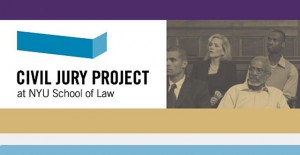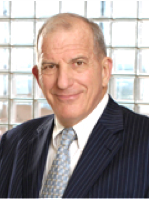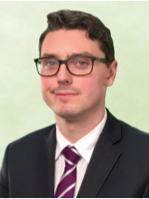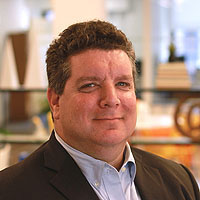Source of article DOAR Litigation Consulting.


Stephen Susman
In a new series on Law 360, Steve Susman, Richard Jolly and DOAR Jury Consultant Roy Futterman provide the Civil Jury Project’s proposed innovations for improved jury trials:
Voir dire has been the main method for selecting jurors in this country since the founding. Lawyers historically handled this process, but over the last few decades federal judges have taken near complete control over jury selection. This is a problem. The Civil Jury Project at New York University School of Law has been monitoring this issue as part of its overall mission to support and reinvigorate the power of juries in our legal system.
It is important to remember that lawyer-conducted voir dire is central to constructing a jury of one’s peers. One reason juries even exist is because back in the day the King of England could not afford judges, so he forced people from the community to work for free. Luckily, these people probably also knew a little bit about property rights, criminal activity, who was sleeping with whose spouse, et cetera. This made the trial move at a quick and dirty pace, but also motivated lawyers to carefully select who they would let decide their client’s fate.

Richard Jolly
As lawyers are prone to do, they realized that voir dire could be used as a sword rather than just a shield. By the 20th century, voir dire became the time that lawyers argued their case, trying to get the jury on their side right out of the gate. And it was common knowledge that you win or lose your case during voir dire. Around the 1980s, however, federal judges — imbued with a newfound fixation on efficiency — came to see this as a problem. Judges took away lawyers’ rights to ask almost any questions, seeing it as a waste of time and an invasion of jurors’ privacy. They thought lawyers were abusing the system and decided that they would handle jury selection themselves instead.
This shift has carried serious consequences. Judges have tended to conduct voir dire in a perfunctory way, often rapidly selecting jurors in just a couple of hours. They accomplish this by basing most of the voir dire on limited demographic questions. This results in a jury selection process in which attorneys are forced to make arbitrary decisions, and invites discrimination. When lawyers have only demographic information to work with, they are left with relying on racial and social stereotypes. Furthermore, because the lawyers are not conducting questioning, it can be difficult if needed to prove discrimination. The U.S. Supreme Court has noted that discriminatory intent is often “best evidence

Roy Futterman, Ph.D.
In addition, judge-conducted voir dire often results in a less impartial jury by misusing the judge’s role as authority figure. The courtroom remains one of the last American institutions in which an authority figure enjoys near royal treatment — having people rise upon entry, for instance. Voir dire questioning by this authority figure encourages potential jurors to meekly answer questions in a way that they believe the judge wants to hear. The practice encourages jurors to give the socially desirable response that, “Yes, I can be fair and impartial, your Honor.” To be sure, a famous empirical study by jury expert Dr. Susan E. Jones showed that jurors are less prone toward self-disclosure when judges rather than lawyers handle voir dire. In that study, jurors questioned by judges changed their answers in conformance with their understanding of what a judge expected almost twice as much as when interviewed by a lawyer. Lawyers, because of their comparatively nonprivileged positions, are better at eliciting biases than are judges.
It seems that the pendulum may finally be swinging back, however. Some federal judges are slowly beginning to allow lawyers to participate once again in jury selection. And the Civil Jury Project is spreading the word that it is possible to realize the benefits of lawyer-conducted voir dire, while also preventing its abuse. One way to do so, for instance, is for judges to impose strict time limits on both jury selection and the trial itself. These limits force the lawyers to strategize from the outset, and not waste time chest-pounding in front of the venire. Another option is for the court to administer substantive pre-voir dire questionnaires, which are specifically tailored to the case and agreed to by both parties. Alternatively, the court could provide information about the venire in advance so lawyers may perform online research. Both of these approaches allow the lawyers to more quickly dismiss jurors without wasting the court’s or the venirepersons’ time. Finally, the Civil Jury Project encourages judges to experiment and report on what they find to be most effective. Trial judges enjoy tremendous discretion over their courtrooms, and with boldness may identify new approaches not yet considered.
If we truly believe in providing litigants with a jury of one’s peers, we must adopt strategies to ensure that parties and their representatives have a say in selecting their jury. When only judges participate, the result is a less representative and less fair cross-section of the community. Yet, if judges and lawyers work together, they can secure the jury’s promise of democratic participation in the administration of justice.
In the coming weeks, we will share nine trial innovation proposals from the Civil Jury Project. Tune in next week, on Wednesday, June 7, for discussion of the first proposal — Limiting the Length of Trials.
Stephen D. Susman is a founder of Susman Godfrey LLP and the executive director for The Civil Jury Project at NYU School of Law.
Richard Loren Jolly is an attorney and research fellow at the Civil Jury Project.
Roy Futterman, Ph.D. is an adviser to the Civil Jury Project. He is a jury consultant, clinical psychologist and director at DOAR, Inc., as well as a columnist for Law360.
The post The Return Of Attorney-Conducted Voir Dire appeared first on DOAR.
